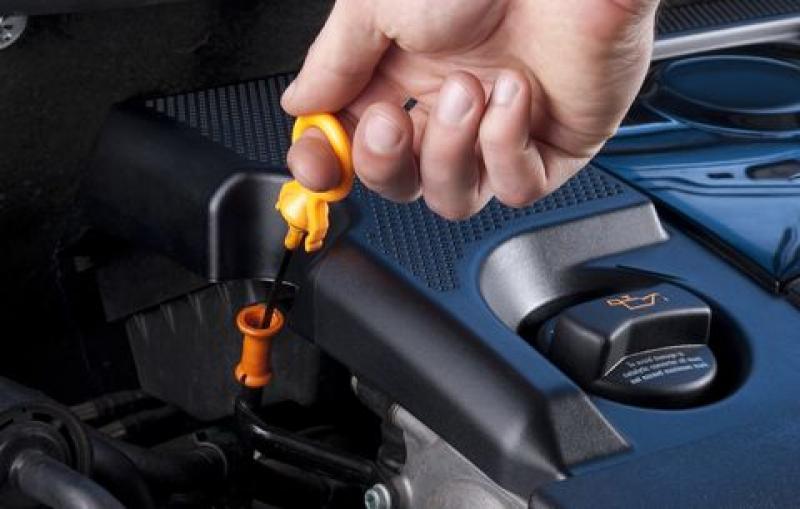- Home
- Shop Inventory MakesBody Type
- Financing
- Read Reviews
- Make A Payment
- LEARN MORE


Posted 3 years ago

Getting an oil change on your used car according to the maintenance schedule specified in your vehicle’s owner’s manual is probably the single best thing you can do to maintain its longevity. Otherwise, in a very short time, you may have to say ‘goodbye’ to what may be your second largest investment.
However, all oil changes are not alike. And whether you do it yourself or have it done for you by a professional, the same rules will apply.
So how can you make sure that your vehicle gets the best possible oil change? Simply follow the tips outlined below.
1. Allow your Used vehicle’s engine to warm up fully. Once an engine is warmed up completely, all the dirt particles and contaminants that settled at the bottom of the oil pan when the engine was off get churned up and suspended in the oil. This will ensure that most of the contaminants get removed when the oil is drained. In other words, they will be drained out with the old oil.
2. Make sure your used car is level when the oil is being drained. This enables the old, dirty oil to drain out as completely as possible.
3. Check the waste oil as it is draining into the pan – look and feel. Look for signs of contamination such as water because with every drain, water will settle at the bottom of the pan. Also, feel for bits of metal which could suggest internal engine problems. You may not have noticed the last time you took your car in for an oil change but a good mechanic normally will run his fingers through the oil while it is draining to ‘feel’ for grit, metal and other contaminants that signal possible engine problems.
4. Remove and inspect the old filter carefully. Most used cars use a spin-on oil filter. Spin-on oil filters were invented in 1955 by Purolator, today, the supplier of high quality oil, air, cabin air, fuel and transmission filters as well as PCV valves and breathers to the North American aftermarket and car manufacturers. Most important, when removing the filter, make sure that the gasket sealing ring comes off with the filter. If it does not, use your fingernail to pry it loose and remove it.
5. Now choose your new filter carefully. Select one that has been manufactured by a company widely known for the quality and efficiency.
6. Install the filter properly. Make sure to coat the sealing ring with fresh motor oil and install it hand tight only. An internally lubricated Nitrile gasket that makes filter removal easier.
7. Choose the correct grade of new oil. Oil is the lifeblood of the engine and choosing the appropriate grade will ensure proper performance. Refer to your owner’s manual for the correct service designation. It will be specified as an API (American Petroleum Institute) rating. If you happen to be working on a vehicle with a diesel engine, then remember it requires oil that is specifically formulated for diesel service and has a separate API rating. While there are pros and cons to using synthetic oil versus conventional oil, you can’t go wrong if you follow the recommendations in your owner’s manual.
8. Choose the correct viscosity or thickness of oil. It will vary by make and model of car and the climate in which the vehicle is operating. The viscosity of the oil will be specified in the owner’s manual as an SAE (Society of Automotive Engineers) number. For example, a typical multi-grade oil is the 5W30. Choosing the proper thickness of oil can affect cold starting, engine protection and fuel economy. For example, 5W-30 oil chemically ‘acts’ like fairly thin 5 weight oil in cold weather to all for easier engine starts, yet ‘acts’ like thicker 30 weight oil when it’s hot to afford more protection under conditions in which you’d expect oil to get thinner as it gets hotter.
9. Use exactly the right amount of oil. Too much or too little can endanger the life of the vehicle’s engine parts one way or another. Over-filling can cause oil leaks and can damage engine seals and gaskets; having too little oil can cause friction and shorten engine life. Remember you can always stop by Deals on Wheels and we will top off your fluids for you
10. Invest a few dollars in buying a magnetic oil pan drain plug that can capture most of the potentially damaging metal particles that may collect in the oil pan.
A seemingly simple procedure like an oil change can potentially have major consequences for your car’s driving performance and longevity. So follow the rules and you will enjoy thousands of miles of driving pleasure.